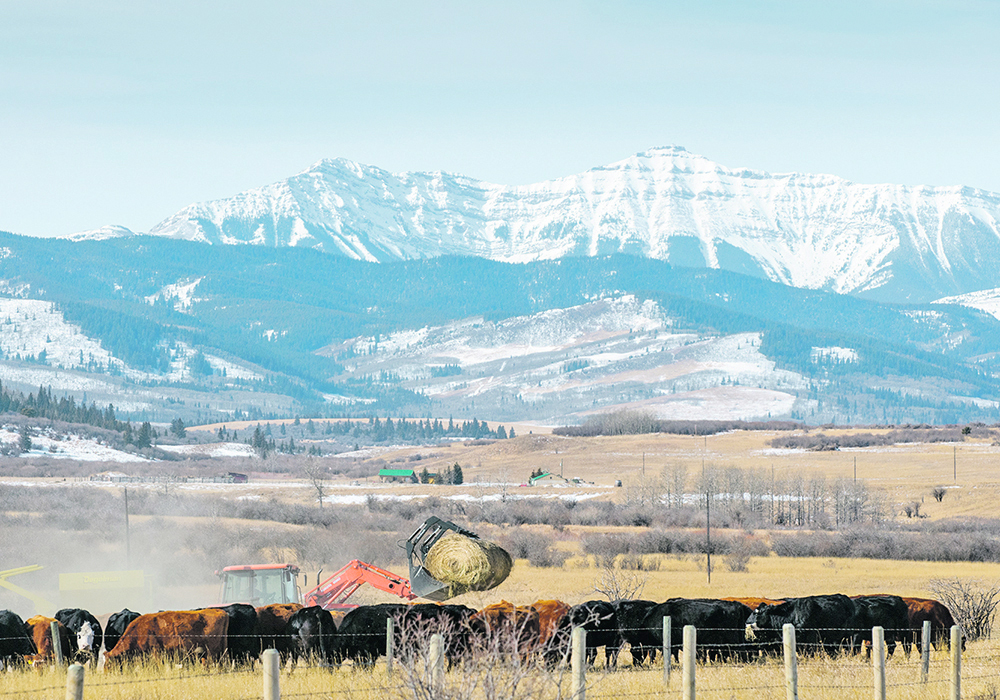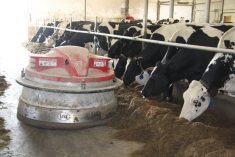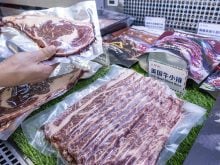Alberta Beef Producers is still in discussions about its financial contribution to the Canadian Cattle Association, despite having to provide slightly fewer checkoff refunds this year to the province’s ranchers.
Talks with the CCA include potentially moving toward a different funding model for the national organization “to help us through a difficult time right now with our funding,” said Melanie Wowk, chair of ABP. “And we should have a conclusion to that by the end of November.”
ABP also expects to get the results of an Alberta beef competitiveness study in November, said the organization’s annual report for 2022. The study was launched last year by the provincial Ministry of Agriculture, Forestry, and Rural Economic Development.
Read Also

Soybean market still figuring out implications of China-U.S. pact
Soybean futures had a muted reaction to the U.S. trade deal with China as the market tries to figure out the nuances of the deal.
“This research will help industry and government understand the best approach to diversify and build capacity and resiliency for Alberta’s meat processing sector,” said the report. “It will also address concerns around price discovery and transparency by identifying which data should be reported at each stage of production, and highlighting potential interventions when margins become excessive.”
ABP said earlier this year that producer requests for checkoff refunds had forced it to explore cutting its annual contribution to CCA by as much as $1 million. The national organization receives about $3 million per year from marketings or sales of cattle by producers across Canada.
During an interview in February, then-CCA president Bob Lowe said he was taking the approach that funding from Alberta will be retained because his organization can’t afford the alternative.
“I think to fix this problem, I think we have to quit talking about industry organizations and start talking about industry funding and keep your organizations out — keep the conversation (about) defending the industry.”
There was a slight decrease in refund requests for ABP in 2022 compared to last year, said Wowk in an interview Oct. 13. “I think we were close to 50 percent last year, and we’re sitting a few percent lower than that.”
A checkoff of $4.50 per head is set aside from the sale of cattle, out of which comes a non-refundable mandatory national levy of $2.50 to support initiatives such as the Beef Cattle Research Council. Producers can apply twice per year for refunds of all or part of the remaining portion of the $4.50, which consists of an ABP service charge of $2 per head.
Although the refund form contains the option for producers to retain 53 cents of their $2 to cover ABP’s expenditures to CCA under a five-year agreement, there hadn’t been much uptake in the past few years. It left ABP on the hook to cover the funding, further aggravating the situation about check-off refunds, said Wowk.
However, communication with farmers and ranchers has significantly improved under the leadership of Brad Dubeau, who is the general manager of ABP, she said. Producers had told the organization it hadn’t been getting the message out to farmers and ranchers about what it does for them, said Wowk.
It has lobbied on behalf of producers for things such as drought assistance in 2021 under the federal-provincial AgriRecovery program, and helped defeat a federal plan this year that would have required health warnings on packages of ground beef, she said.
“And hopefully, they’re starting to see the importance of having their voice in Alberta.”
ABP is also lobbying federal officials to provide $3.2 million per year to create a national vaccine bank for foot and mouth disease. The beef industry fears there is an increasing possibility an outbreak will occur in Canada that could devastate producers by closing international borders for beef exports, said Wowk.
Although there hasn’t been an outbreak in the country since the 1950s, the federal government needs to create an action plan to ensure Canada is better prepared to deal with the disease, she said. Representatives of the National Cattlemen’s Beef Association in the U.S. told the recent Canadian Beef Industry Conference in Penticton, B.C., “that Canada and Mexico need to be ready for this,” said Wowk.
“The Americans are putting more funding into their own — and they emphasize own — vaccine bank that will not be shared. And they are hoping that our governments step up and do the same because there’s so much movement of cattle between those three countries that really if it hits one, it’s more than likely it will hit all three, so they were asking us to maybe get a bit more vocal about this.”
Foot and mouth disease is becoming endemic in many countries around the world, she said. “Egypt just declared it; Indonesia, they’ve got a large outbreak going on; there’s been confirmed cases in South America … it’s scary about South America because theoretically there are two different continents, but we are attached, and there’s cattle on the move from places in South America into Mexico and places like that, so we can’t think we are immune from anything there.”
ABP is also warning its members to start preparing this autumn for possible drought this spring, said Wowk, who is also a beef producer. “There’s a lot of places where water is just disappearing, and we know for ourselves, our dugouts are looking pretty dry right now.”
Although many areas in Alberta had rain in June, it started tapering off in July, she said, pointing to dry conditions in much of the central and southern portions of the province.
“So yeah, the question is … are people going to be prepared for the spring, whether that means some type of portable water source, wells, or possibly another reduction in herd size,” said Wowk.
“That’s something that producers will have to decide themselves, but it’s something I think that we just want people to realize that the potential is there again this year.”
















